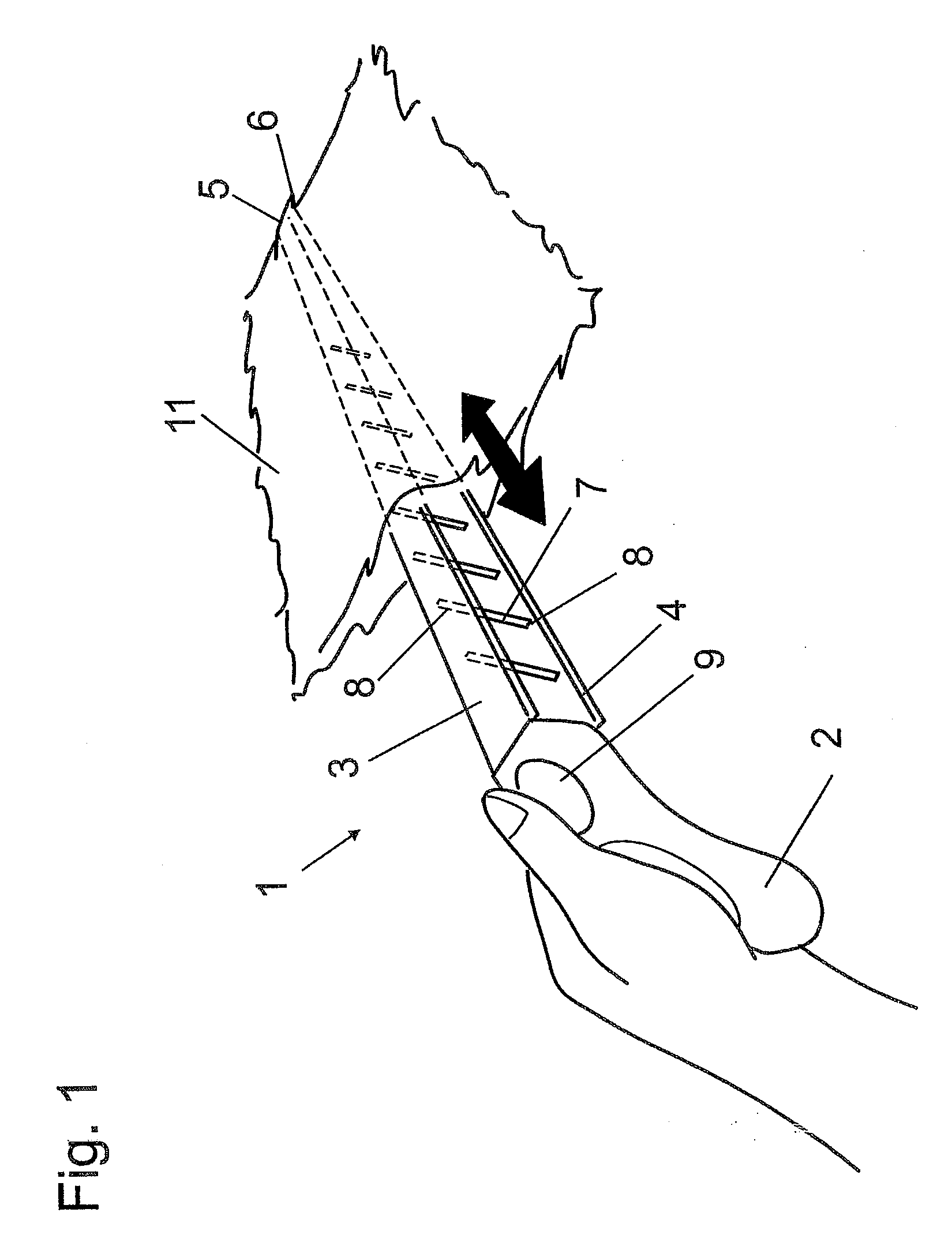Dusting tool
a technology of dusting tool and edge area, which is applied in the field of dusting tools, can solve the problems of difficulty in cleaning curved surfaces and the inability to reach the edge areas of high-lying surfaces with difficulty, and achieve the effects of reducing the difficulty of cleaning curved surfaces, facilitating cleaning, and improving the effectiveness of cleaning uneven surfaces
- Summary
- Abstract
- Description
- Claims
- Application Information
AI Technical Summary
Benefits of technology
Problems solved by technology
Method used
Image
Examples
Embodiment Construction
[0020]FIG. 1 shows a dusting tool 1 for dry dusting the surfaces of objects. The dusting tool 1 comprises a handle 2 to which two bars 3, 4 are attached at a certain distance from each other. The free ends 5, 6 of the bars 3, 4 are connected to each other. Between the bars 3, 4, a number of spacers 7 are disposed, which spacers are connected to the bars 3, 4 by means of hinged supports in the form of film hinges 8. The bars 3, 4 and the spacers 7 are made of a plastic material, in this case of polypropylene, and both are made of the same material and are integrally formed in one piece. They are manufactured by means of the injection molding method. Disposed to handle 2 is an actuating device 9. In this particular embodiment, the actuating device 9 comprises a push button which can be actuated by the thumb of a user. By actuating the push button of the actuating device 9, the first bar 3 is lengthened and the second bar 4 is shortened at the same time, which causes the dusting tool 1...
PUM
 Login to View More
Login to View More Abstract
Description
Claims
Application Information
 Login to View More
Login to View More - R&D
- Intellectual Property
- Life Sciences
- Materials
- Tech Scout
- Unparalleled Data Quality
- Higher Quality Content
- 60% Fewer Hallucinations
Browse by: Latest US Patents, China's latest patents, Technical Efficacy Thesaurus, Application Domain, Technology Topic, Popular Technical Reports.
© 2025 PatSnap. All rights reserved.Legal|Privacy policy|Modern Slavery Act Transparency Statement|Sitemap|About US| Contact US: help@patsnap.com



